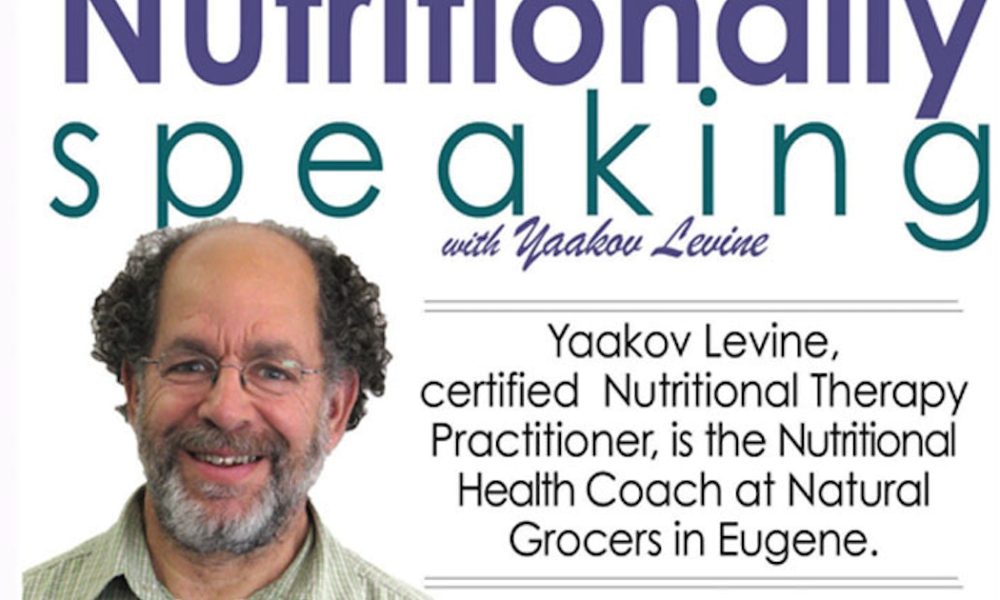
Part of my work as a health coach is helping people find healthier food choices. When they come to me asking for this guidance, they want to be healthier and manage their weight, often not knowing where to start.
In my work we talk a lot about nutrient density. A food ingredient or meal that has nutrient density implies that there is a high ratio of nutritional value to caloric value. In other words, we are looking for food that has more than empty calories as found in bread, pasta and other high-caloric, low-nutrient ingredients.
The processed grain used in bread can offer other health challenges along with the potential for weight gain and blood sugar dysregulation. Most grain contains proteins that can irritate the digestive tract, and in some people may contribute to autoimmune issues and allergy symptoms. Unless they are using organic methods which prohibit this practice, commercial growers of wheat, oats and other grains are using glyphosate, the main active ingredient in Roundup as a desiccant (drying agent) so that they can harvest the grain sooner. Would you like a side of poison with your oats this morning, sir?
I am always on the lookout for alternatives that taste great and have that nutrient density we should all have on our plates.
Is there a healthy way to enjoy a sandwich? As the old fable informs us, the Earl of Sandwich was an avid card player. On one occasion, he was having a great day at the card table but was feeling hunger pangs. He asked his assistant to put some meat between a couple of slices of bread so he could continue with his winning hand and eat as well… and the ”sandwich” was born!
I came across a flatbread recipe from a colleague that fits the above-described, nutrient-dense criteria. These flatbreads are versatile and can be enjoyed as pancakes, to make a sandwich or even a roll-up handheld device.
They are tasty, nutrient-dense and here is a favorite recipe courtesy of the Empowered Sustenance website:
Butternut Squash Flatbread
Ingredients
1 tablespoon coconut flour
1½ teaspoons grass-fed gelatin
3 tablespoons well-cooked and mashed butternut squash (or sweet potato, which is our favorite)
1 tablespoon butter, ghee or coconut oil
1 egg
¼ teaspoon sea salt (more or less to taste)
(You can double the recipe if desired)
Instructions
Have all ingredients at room temperature. (If the squash and butter are cold, you can stir them together in a saucepan over low heat to bring them to room temperature.)
Preheat the oven to 400 degrees and line a baking sheet with parchment paper. Stir together the coconut flour and gelatin.
Stir together the squash and the butter until smooth. Stir in the coconut flour/gelatin mixture until combined, then stir in the egg and sea salt.
Spoon into rounds on the baking sheet. You can make these thinner or thicker – experiment and find what you prefer!
Bake for about 12 minutes, and then carefully peel them off the parchment paper and flip. Bake for another 5 minutes (or longer), until they are dry to the touch and pliable. (They will take longer to cook if they are thicker and they will cook faster if they are thinner…you know the drill.) Let cool completely, then enjoy within an hour or so of baking for the best texture.
Let’s look at the ingredients, starting with coconut flour. This flour is a great alternative to those milled from grains, with only one downside: it can add dryness to a recipe. In this case, that is not an issue due to the moisture of the other ingredients.
Gelatin is also known as cooked collagen. ”Colla” in the Greek language means ”glue” and as such collagen or gelatin support our health in many ways, supporting the health of our joints, skin, nails, hair, bones…did I forget anything? This ingredient supports our whole body! Make sure the gelatin you use is from grass-fed animals.
Butternut squash and sweet potatoes are rich in antioxidant nutrients and are important preservers of our health. Butter and ghee (clarified butter) are excellent energy-supplying ingredients and add flavor to the flatbread. Eggs are a superfood on their own with healthy fats, proteins, and many water- and fat-soluble vitamins.
The final ingredient is the sea salt, which supplies critically needed trace minerals.
As you can see, these flatbreads can add much-needed nutrients to your meals. A favorite way that I enjoy them is as a burger bun…don’t forget organic unsweetened ketchup, a slice of sweet onion and some pickles! Salud!







